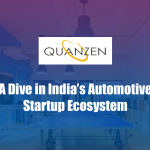How disruptions are making Indian automotive market fast evolving!
The best way to grow a market is making it open for global players. This statement is probably most applicable to the Indian automotive. Indian car market was once dominated by just three or four players and the whole game was ruled by cost sensitiveness. As Indian economy opened its doors to the global players, things started changing slowly. After markets opened up, the major constraint was no more regulations but the consumer mindset. As numerous models from global players started flooding multiple showrooms across the country and the median income started rising, the whole Indian automotive market started moving upwards – not only in terms of market value, but also in terms of features provided and competition within the car makers.
A decade ago, India had a large portion of major global brands doing business in its land; what it lacked was disruptions. At that time, every car maker sort of tried ‘downscaling’ their existing models for Indian markets. Indian versions of reputed global models were stripped of safety as well as utility features and then launched for the ‘cost sensitive’ Indian customers.
While everyone believed Indian customers are price sensitive, some companies were testing the ground by introducing disruptive features in their models. For instance, a couple of years back, Tata Motors was the first company in the country to send Nexon, its compact SUV for global NCAP testing which was eventually awarded 5 stars. This move entitled Nexon an advantage which no other model in this segment could command. This also led to sudden awareness among the consumers about existence of something like NCAP. Following the suit, Mahindra also got its XUV 300 NCAP approved. Altroz – the premium hatchback from the house of Tatas has also bagged an NCAP rating and is being marketed as India’s safest hatchback. This one move from one company has drastically changed what is perceived as ‘value’ in the eyes of customers and many other manufacturers are in the process of getting NCAP certifications for numerous models under their brands.
If we look around in the auto world, we realise that many such features have made their way into the market because of such a disruptive move from one manufacturer. Hyundai was the first company to introduce ventilated seats in India in its sedan – Elantra. Later, Kia was the first one to introduce them in sub 4 meter or compact SUV segment . Another example could be of Head up Displays. Originally available on premium cars such as Toyota Prius, Honda CR-V and Accord, Kia introduced them in its SUV, Seltos. If one looks at several articles and reviews that compare Seltos with a competitor like MG Hector, (Here is one in case you want to read), it highlights lack of head up display in Hector along with some other features. The point is, MG and other competitors like Tata Harrier will have to work on including these features; the sooner the better for them.
Same can be seen for a feature like Tire Pressure Monitoring System. Hyundai launched it for the first time in premium hatchback segment. This feature can now be seen on many other models such as Creta, Seltos, XUV300, Nexon, City etc. Maruti Suzuki is providing TPMS as an optional feature on all of its models.
Due to changing lifestyle, the relation of consumers with their automobiles has become much more intricate and user experience carries importance more than ever before. Sensing this, Hyundai Venue was the first car in India to launch connected features. Now, Seltos, Sonet from Kia and Kicks from Nissan also carry these features.
Another interesting example with which everyone can relate is that of air purification with virus protection or disinfection of car cabin air. Due to the COVID-19 pandemic, this feature, which one would have never considered otherwise, has become a key differentiator. Kia Sonet was the first one to introduce it in the compact SUV segment. Many other models such as Creta, Seltos, MG ZS, Venue, Carnival now have this feature.
What next?
While Indian market has gained significant traction in terms of feature upgrades, this is just the beginning. With rise of technologies in the domains of ADAS, smart surfaces, connected technologies, the number and pace of disruptions awaiting us is going to increase drastically. To know more contact me at sudhir.nerurkar@quanzen.com.




